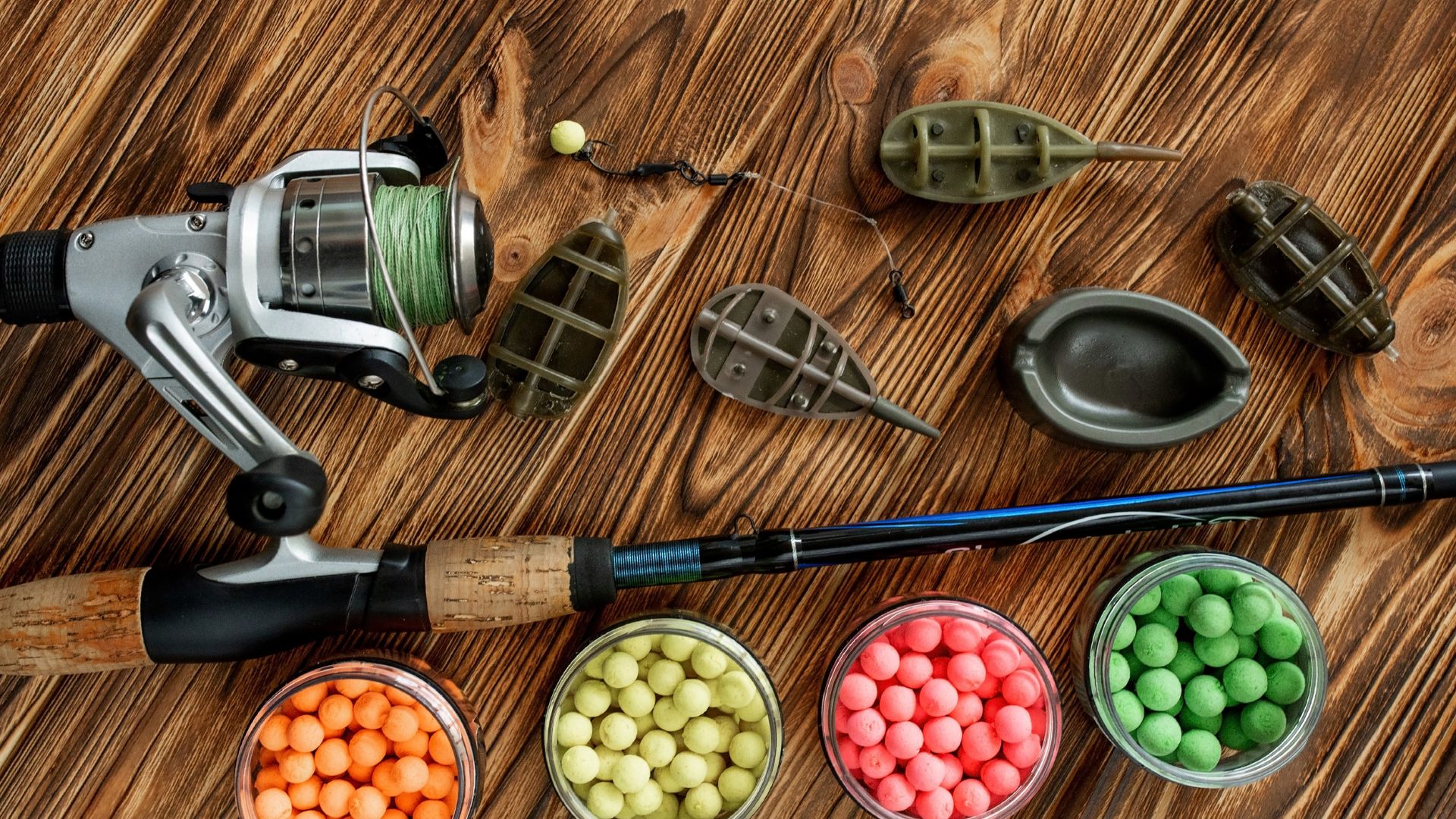The Basics of Fishing Tackle and Bait

Bait and tackle refers to an assortment of equipment used by anglers to catch fish. The phrase may have its roots in bait lures and hooks being essential fishing tools.
Live bait lures can be constructed using various natural and artificial materials, including those resembling animals such as worms, crawfish or lizards.
Pole
A pole is any tool used to cast lines and bait into water to catch fish. Depending on the species of fish being pursued, different rods are needed – some specialize in lure fishing while others use natural bait such as worms.
Fishing rods are typically described by their power rating, which describes the amount of tension they can support when casting lures. Their target species or size of fish also play a factor. Unfortunately, power ratings can sometimes be confusing as different manufacturers use different standards to define light, medium and medium-heavy rods.
Many rods are constructed from fiberglass or graphite material. Fiberglass rods tend to be more versatile but heavier than their graphite counterparts; some anglers prefer graphite rods because their sensitive sensitivity allows them to feel even the slightest bites from fish.
Line
A fishing line is a flexible length of rope used to connect bait or lures to poles. Anglers select lines that match the weight and species weight of their targeted fish species as well as hook sizes suitable for their bait. A float or sinker may be attached at either end to ensure their bait remains at an appropriate depth in the water.
Monofilament lines are one of the most popular fishing line choices and consist of one or more types of nylon polymers extruded into a strong single strand in various sizes, strengths, and diameters. Monofilaments tend to be relatively cheap while providing plenty of stretch for quick hook sets while remaining resilient against shock strikes by keeping lures longer inside fish’s mouths.
Hooks
Hooks are among the smallest yet most important pieces of fishing tackle. A good hook should be sharp with an opening between its point and shank called a gap that’s large enough to allow fish through, sturdy enough to hold fish once caught, and come in various shapes and sizes to suit different kinds of fish and bait types; some even come equipped with barbs to keep bait on it!
An octopus hook is ideal for baiting freshwater species such as bluegill, sunfish, trout, bass and walleye with worms or night crawlers on a bobber rig, while an aberdeen has a longer and straighter shank to use with artificial plastic baits like jigs and lures.
Lures
There is an array of lures to choose from, but when selecting one for fishing conditions it should always match up to what works. For instance, murky waters require brightly-colored lures which can be seen more readily.
Metal lures come in all shapes, sizes and colors to mimic baitfish and activate predatory instincts in fish. Retrievability speeds are varied to produce various actions and vibrations which simulate fleeing prey.
Walkers feature wide bibs that waddle on the surface when retrieved, creating an audible disturbance and noise. Fluttering baits, lizards and frogs are among many types of hard plastic lures; others such as jigs with weighted heads concealing hooks can be fitted with feathers, plastic grubs or live bait for additional attraction.
Bait
Bait is any live or artificial substance used to attract fish onto your hook. Examples of live bait include worms, minnows, leeches and insects – even whole fish (cut into sections). Artificial lures mimicking prey attract more fish.
Diverse baits attract multiple species, increasing your odds of catching something. DIY fishing trips make bait an economical solution; any leftover can be returned to nature or frozen until your next fishing excursion.
A bait shop sells both live and frozen bait, in addition to fishing rods, reels, reels, reels, line, hooks and bobbers as well as related hardware such as refrigeration or a circulating water system for storage purposes. Bait can be particularly messy, smelly and difficult to transport so special storage requirements such as refrigeration are usually necessary when transporting it.
